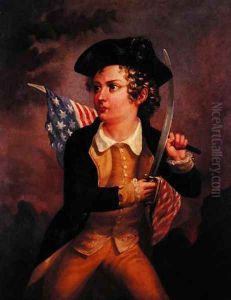Charles G. Crehen Paintings
Charles G. Crehen was a French artist known for his contributions to the Barbizon School, a group of artists working in the Barbizon village near the Fontainebleau Forest in France during the mid-19th century. They were part of a pre-Impressionist movement, focusing on realism and nature, and their works were characterized by a tonal quality, subdued color, and a contemplative mood.
Born in 1848, Crehen's early life is not extensively documented, but it is known that he was active during a time when the Barbizon School was influencing the course of European painting. The artists of this school, such as Jean-François Millet, Théodore Rousseau, and Charles-François Daubigny, rejected the formalism of the academic painting that dominated French art at the time and sought inspiration directly from nature.
Crehen likely received his artistic training in France and would have been exposed to the works of these leading Barbizon painters, as well as the burgeoning Impressionist movement. While historically not as well-known as some of his contemporaries, Crehen's work did contribute to the landscape genre of the era, capturing the rural French countryside with a sensitivity to light and atmosphere that was characteristic of the Barbizon style.
Throughout his career, Charles G. Crehen exhibited his work in various salons and garnered attention for his landscape paintings. Despite the overshadowing fame of other Barbizon and Impressionist artists, Crehen's works were appreciated by art collectors and critics for their quiet beauty and mastery of tone.
Crehen continued to paint throughout his life, and his works remain as a testament to the Barbizon School's impact on the development of Western art. He passed away in 1926, leaving behind a body of work that, while not as widely recognized as some of his peers, contributes to the rich tapestry of 19th-century French art.
